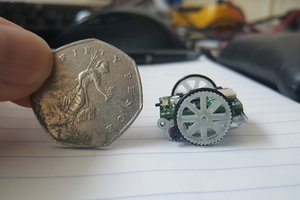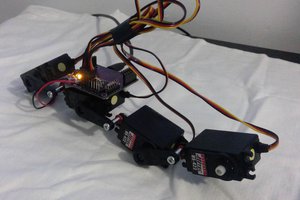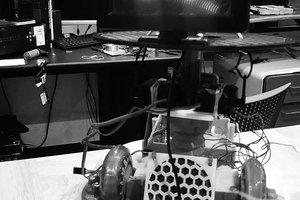Project Titan
Create a mechanized robot inspired by the TitanFall titan, but using pneumatic actuators and building it with a reasonable budget
Create a mechanized robot inspired by the TitanFall titan, but using pneumatic actuators and building it with a reasonable budget
To make the experience fit your profile, pick a username and tell us what interests you.
We found and based on your interests.
Not a lot of information is widely available for pneumatic cylinders and the Arduino (or at least none that I have found, please leave a comment if you know of anything other than a simple demo project). There are a couple of projects I found on YouTube but a lot of them never went very far or are just the basics (which I can use to get started).
I hope to change all of that by releasing all the entire project as Open Source/Open Hardware for anyone to recreate, and/or modify.
I live in a small apartment on Long Island, NY and so I have a few neighbors with only a small paper-thin wall between us. So my work will have to take place at reasonable hours of the day (ie: 5pm-8pm on weekdays, 12pm-8pm on weekends). This will prevent me from doing a lot of hardware testing late at night (my best coding time, as I am sure you are familiar with) and will slow down my progress. I am employed by a company that is about 10min. away from my apartment, and as a small company I wear quite a few hats and tend to work more than 40hrs/week, so my rate of progress will probably be slower than I would have liked. That being said, this project is going to take months if not years so I am OK with this as it allows me to reflect on what I have accomplished that day, and allow me to update this project log.
So a lot of walking gaits for robots are so called: static movement algorithms, in which the robot is always balanced, but that is not how we walk, so I will choose the active dynamic movement algorithms (Passive dynamic movement uses the inertia of the robot to make the walking gait), which I will have to write myself.
My control program will need some sort of feedback to get the right "muscle memory" to stand up and walk, which will probably be some sort of potentiometer along with an accelerometer(already have) and gyroscope, since it is cheaper than a flow meter and/or some sort of position sensor.
This HackADay article on hacking a laser measurement system might be valuable for determining distance to objects and/or the ground, which will probably provide useful for control.
So I must come up with a battleplan to tackle this monster of a project.
1. Create the battleplan (this list)
2. (Small) purchase of some components for testing
3. Hardware Setup & Programming
4. Purchase more components
5. Integrate components into overall testing setup
6. Start working on design of robot
Servos are great. You can buy high-torque ones and fast ones and they are relatively easy to program since they are repeatable (go at this speed to this angle) and work great when doing calculations.
They are too repeatable and they are too easy to program. I know it doesn't make sense, don't you want it to be easy to program? Yes and no. Yes because then development is easier but no because they also don't represent our muscles all too well. Only muscle memory or reaching the maximum stretch/contraction of a muscle/ligament/tendon allow us to have repeatable actions, and this comes with time and repetition, and is still off by a little bit. So pneumatics really fit better when talking about muscles/tendons/ligaments.
Now this isn't to say I won't use servos at all in my design, on the contrary I can see a number of uses already in my head for them, such as move the head around, possibly used for the leg-to-hip assembly and possibly a weight mass in the torso of the robot to better counter-act or
Sure, I could use McKibben Artificial Muscles, but they are expensive to buy and if I make them myself (which is apparently pretty easy to do) they may not be exactly the same and lead to more programming complications.
Wait, didn't you want them not to be repeatable? Yes, but I also don't want to spend years on the programming side of this (although it may take that long anyways) trying to figure out the differences between the muscles on either side of the robot. Also they tend to wear out faster than a regular pneumatic cylinder.
Create an account to leave a comment. Already have an account? Log In.
Become a member to follow this project and never miss any updates

 Anthrobotics
Anthrobotics
 Joshua Elsdon
Joshua Elsdon
 Alex Martin
Alex Martin
 OpenRomibo
OpenRomibo
I understand from your logs/comments that you are still in a research phase, I was curious as to whether or not you had given these details any thought yet.
Overall, I like this project.